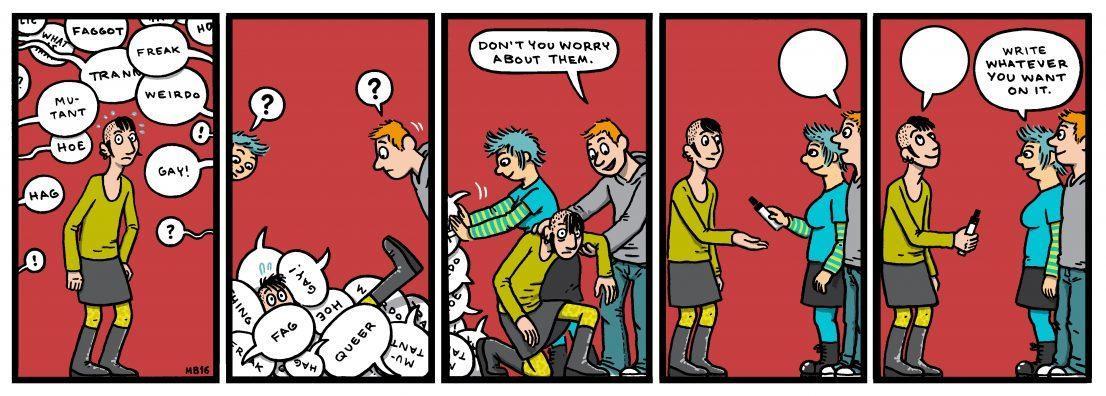Be Yourself

Adolescence is often thought of as a time of searching and experimenting, and adults should already know who they are. However, sexual and gender identity evolve throughout life.
Individuals are typically assigned the sex of a girl or a boy at birth. Yet everyone experiences gender in their own, unique way. A person’s gender often matches the sex assigned at birth, but this is not always the case.
Gender expression may vary throughout life. Some find its flexibility and changeability important – while others do not see gender as a significant defining characteristic at all.
Although we often only speak of men and women in our culture, there are other genders and terms for them, and some prefer to leave their gender unidentified. Some may characterise themselves as asexual or non-binary, for example.
Everyone’s personal gender expression is correct, and all people should be addressed using the gender-related words and names that they themselves have chosen and identify with. The pronoun “they” can be used in situations, when someone’s gender identity is not known or it doesn’t fit into “he” or “she”.
Encountering Gender
People make assumptions of each other based on appearance, clothes or voice. However, gender is not something that can always be judged from the outside.
If the other person does not bring up their gender, the only way to be sure about it is to ask. Everyone also has the right not to define themselves or to keep their gender to themselves.
- How do I identify the gender of other people?
- How do I react to a person whose gender I am not sure of? Does one always have to be sure of other person’s gender?
- When and how should I ask what words a person wishes I use in reference to them?
Words for Speaking About Gender
Cisgender is a person whose gender matches the sex they were assigned at birth, i.e. a man who was assigned male at birth or a woman who was assigned female at birth.
An intersex person has atypical genitals at birth. Typically the sex of a child is assigned by genitalia, but with intersex children, it is not necessarily possible to assign it unambiguously. An intersex person may identify with any gender regardless of the sex assigned at birth and their anatomy.
Non-binary and genderqueer are examples of words that are used for people who do not wish to identify their gender as male or female.
A transgender person’s gender differs from the sex they were assigned at birth, for instance a woman who was assigned male at birth or a non-binary person who was assigned female at birth. A transgender person may change their name or go through a sex reassignment process during their life.
A transvestite is a person who takes on a gender role that differs from their everyday gender expression, such as a man who dresses and behaves as a stereotypical woman. Cross-dressing may be an occasional role playing game or part of a person’s gender identity.
